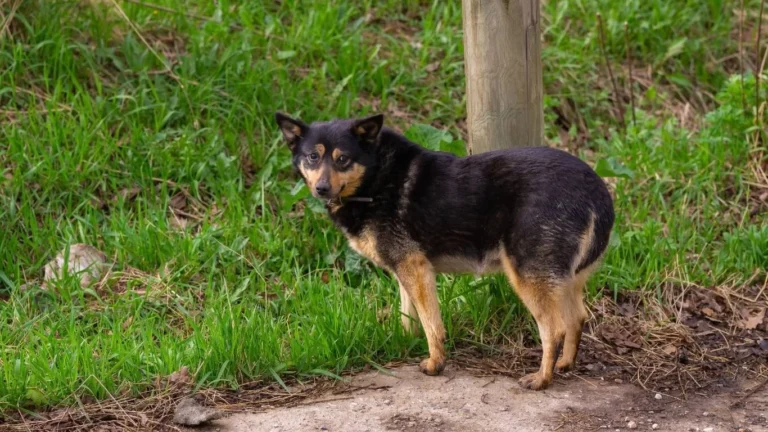The Best Diet for Dogs in Cold Climates to Keep Them Warm and Healthy
As an Animal Care Specialist with years of experience working in both pet clinics and shelters, I’ve encountered all sorts of dog care challenges, and one of the most important aspects is ensuring that our furry friends get the right nutrition, especially when they live in colder climates. If you’ve ever had a dog in a region with freezing temperatures, you know just how much more energy they can burn trying to keep warm. So, the question is—what is the best diet for dogs that live in cold climates? Well, that’s exactly what we’ll dive into today. Understanding the right food can make a huge difference in your dog’s health and comfort during the colder months.
Understanding the Nutritional Needs of Dogs in Cold Climates
When it comes to dogs living in colder climates, their nutritional needs can vary significantly from those living in warmer areas. In frigid temperatures, dogs burn more calories to keep their body temperature stable, so their diet needs to be adjusted accordingly. You’ll likely notice your dog eating more in winter, and that’s because their body requires extra fuel to generate heat. So, it’s essential to provide them with the right mix of nutrients to support their energy needs.

Before diving into specifics, it’s important to note that the best diet for dogs in cold climates is one that’s not only high in calories but also contains the proper balance of proteins, fats, and carbohydrates. I always recommend focusing on nutrient-dense foods that provide the energy your dog needs without overloading them with empty calories. Dogs need more than just a high-calorie diet; they need the right calories, which will keep their coat thick, their joints healthy, and their energy up during the chilly months.
1. Protein: Essential for Energy and Muscle Maintenance
Protein plays a huge role in a dog’s diet, and that’s especially true for dogs living in cold climates. In colder temperatures, dogs need to generate more body heat, and this requires additional muscle activity, which in turn burns protein. A good source of protein can help ensure that your dog has enough energy to stay active and warm. It also supports the maintenance of muscle mass, which is crucial for dogs who might spend more time playing outdoors in winter.
Look for foods with high-quality animal protein such as chicken, beef, lamb, or fish. These proteins are not only rich in the amino acids your dog needs for muscle growth and repair but also help boost the overall caloric density of their diet.
2. Healthy Fats: Keep Your Dog Warm and Well-Energized
Fat is a vital nutrient that helps dogs in cold climates maintain their energy levels and body heat. In colder weather, fat provides the concentrated energy source dogs need to sustain themselves throughout the day. Not only does fat help keep your dog’s body temperature regulated, but it also supports the absorption of fat-soluble vitamins, which are necessary for a variety of functions in the body.

One of the best sources of fat for dogs is fish oil or animal fat from beef or poultry. Fish oil, for instance, is packed with omega-3 fatty acids, which are known for their anti-inflammatory properties. These fats not only provide calories but also support skin health, which is especially important in cold weather when dogs can be prone to dry, flaky skin.
3. Carbohydrates: For Sustained Energy Release
Carbohydrates are often viewed as secondary to proteins and fats, but they are still an important part of your dog’s winter diet. The key here is to choose easily digestible carbohydrates, which provide a steady source of energy throughout the day. Complex carbs like sweet potatoes, brown rice, or oats are excellent sources of energy. They release glucose slowly into the bloodstream, providing your dog with sustained energy for those extra long winter walks or outdoor adventures.
However, it’s crucial not to overdo it with carbs. While they’re necessary, they should never outbalance the amount of protein and fat in your dog’s diet. Too many carbs can lead to weight gain, which is definitely something you want to avoid, especially when your dog is already consuming more calories due to the cold weather.
4. Vitamins and Minerals: Supporting Immune Health
In cold weather, dogs can be more vulnerable to illnesses, so maintaining a strong immune system is crucial. A balanced diet rich in vitamins and minerals will help support your dog’s immunity and overall health. Look for foods that contain vitamin C, vitamin E, and zinc—these nutrients are known to bolster the immune system and help fight off infections.
- Vitamin C: Acts as an antioxidant and supports the immune system.
- Vitamin E: Helps reduce oxidative stress and supports the health of the skin and coat.
- Zinc: Important for skin health and immune function.
Some dog foods are specially formulated with these nutrients, so be sure to check the ingredient list or consider adding fresh vegetables like spinach, carrots, or pumpkin to their meals as natural sources of these vitamins and minerals.
How to Adjust Your Dog’s Diet in Winter
Now that we’ve covered the types of nutrients your dog needs, you might be wondering how to put this into practice. In my experience, one of the best ways to adjust your dog’s diet during the colder months is to gradually increase the quantity of food you’re feeding, while still sticking to a balanced, high-quality formula. You don’t want to change your dog’s food drastically all at once, but rather, adjust their portion sizes based on their energy output and weight. Also, keep an eye on their body condition—if you notice they’re putting on weight too quickly, it might be time to dial back the calories a bit.
Additionally, consider feeding your dog meals with a higher fat content in winter, as this will help keep them energized and warm. If your dog’s food doesn’t already contain these nutrient-dense ingredients, you can supplement with high-quality oils like fish oil or coconut oil. But always be cautious with portion sizes when adding supplements, as they can be quite calorie-dense.

Remember, each dog is different, so it’s always a good idea to monitor how your dog responds to dietary changes and adjust accordingly. If you’re unsure, it’s never a bad idea to consult with your vet to ensure your dog is getting everything they need to thrive in cold weather.
Choosing the Right Type of Food for Dogs in Cold Climates
When it comes to feeding dogs in cold climates, the type of food you choose can make all the difference in keeping your pup healthy, happy, and well-nourished. As someone who’s seen the impact of diet on dogs living in colder environments firsthand, I can tell you that not all dog foods are created equal. Whether you’re feeding dry kibble, wet food, or a homemade meal, there are important factors to consider when selecting the best food for dogs that live in cold climates.

1. Dry Kibble: A Convenient Option with the Right Ingredients
Dry kibble is often the most convenient choice for many dog owners, especially during the winter months when you might not want to deal with the extra hassle of prepping homemade meals. But just because it’s convenient doesn’t mean you should compromise on quality. When selecting dry food for dogs in cold climates, look for options that are rich in animal protein and healthy fats, as these will support your dog’s increased energy needs during the winter.
One thing I always advise my clients to check is the fat-to-protein ratio. A high-fat, moderate-protein diet is ideal for dogs in colder climates, as it ensures they have the necessary fuel for staying warm and active. Also, make sure the kibble includes some good carbohydrates for energy, but not too many that it would cause weight gain. And don’t forget to choose a kibble with added vitamins and minerals to support your dog’s immune system, which can be more vulnerable in cold weather.
2. Wet Food: A Great Alternative for Increased Hydration
If you’re looking for something more flavorful and hydrating, wet food is another great option. Wet food is typically higher in protein and moisture content than dry kibble, making it a solid choice if you’re aiming to keep your dog hydrated. In winter, especially when the air is dry, hydration is super important. Wet food can complement dry kibble or even be used as a standalone option for dogs who might have trouble drinking enough water in the cold months.
One thing I’ve noticed with wet food is that it tends to have a higher fat content, which is exactly what dogs need when they’re burning extra calories trying to stay warm. If you’re switching your dog to wet food during the winter, make sure you’re still maintaining the proper balance of protein, fat, and carbohydrates to avoid overfeeding or nutritional imbalances.

3. Raw Food: For the Ultimate Natural Diet
Raw food diets, also known as the “BARF” diet (Bones and Raw Food), have become increasingly popular, and for good reason. For dogs living in colder climates, a raw food diet can provide the ultimate nutrition, offering a natural, balanced blend of proteins, fats, and essential nutrients that dogs were designed to eat. While feeding raw is more time-consuming and can be a bit more expensive, I’ve seen the benefits firsthand—dogs on a raw diet often have shinier coats, healthier skin, and increased energy levels.
If you decide to go the raw route, make sure you’re providing a variety of proteins (chicken, beef, lamb, turkey) and incorporating organ meats, bone, and fat for a balanced nutritional profile. I always recommend consulting with a vet who’s experienced with raw feeding to ensure you’re getting the right mix of nutrients, especially when it comes to providing the proper fat content for dogs in colder climates.
4. Homemade Meals: A Customizable Option for Your Dog’s Unique Needs
For those who are really hands-on with their dog’s nutrition, homemade meals can be an excellent way to cater specifically to your dog’s needs. I’ve worked with clients who swear by home-cooked meals for their dogs, especially in winter when the weather can be harsh on the body. Cooking your dog’s meals allows you to control the quality and proportions of every ingredient, making it easier to give them the precise balance of protein, fat, and carbohydrates they need.
Some of the best winter-friendly ingredients to include in homemade meals are lean meats (like chicken or turkey), healthy fats (such as fish oil or coconut oil), and starchy vegetables like sweet potatoes and pumpkin. Not only will these ingredients provide your dog with the energy they need to stay warm, but they’ll also be gentle on their digestive system.
Just like with raw food diets, if you’re planning to cook for your dog, it’s a good idea to consult with a veterinarian or canine nutritionist. They can help you put together a meal plan that’s nutritionally complete and meets all of your dog’s needs.
Supplements to Consider for Dogs in Cold Climates
In addition to a well-balanced diet, some dogs may benefit from supplements, especially those living in cold climates where the harsh weather can take a toll on their overall health. While a great diet should cover most of their nutritional needs, supplements can help fill in the gaps and ensure they’re getting everything they need to thrive during the colder months.
1. Omega-3 Fatty Acids
As I mentioned earlier, omega-3 fatty acids (found in fish oils) are incredibly beneficial for dogs in cold climates. These healthy fats support skin and coat health, which can be especially important when the dry winter air starts to affect your dog’s skin. Omega-3s also have anti-inflammatory properties that can help keep joints healthy, which is crucial for dogs that are active in colder weather.
If your dog isn’t already getting enough omega-3s through their food, you can consider adding a fish oil supplement to their diet. Just be sure to choose a high-quality supplement, and follow the recommended dosage to avoid any issues with over-supplementation.
2. Joint Supplements
Cold weather can often exacerbate joint problems in dogs, particularly for older dogs or breeds that are predisposed to joint issues like arthritis. If your dog’s activity levels increase during the winter months, it may be a good idea to consider adding a joint supplement to their diet. Ingredients like glucosamine and chondroitin are great for supporting joint health and can help your dog move more comfortably when they’re out playing in the snow.

3. Probiotics
Probiotics are another supplement that can be beneficial, especially for dogs with sensitive stomachs or those who are adjusting to a new diet. Winter can sometimes throw off a dog’s digestive system, especially if there are sudden changes in diet or food quantity. Probiotics help support gut health by promoting a healthy balance of bacteria in the digestive tract, which can improve overall health and even support the immune system.
Whether you choose to supplement with omega-3s, joint support, or probiotics, always consult with your vet to ensure the supplements are appropriate for your dog’s specific needs. Supplements should never be a replacement for a balanced diet but can be a helpful addition to keep your dog in top shape during the colder months.
How to Spot Signs of Nutritional Deficiencies in Dogs During Winter
As much as we love seeing our dogs frolic around in the snow, it’s crucial to pay attention to their health, especially when it comes to their diet. Even if you’re feeding your dog the best food for cold climates, it’s important to know how to spot signs of nutritional deficiencies or imbalances. In my experience, early detection can help prevent bigger health issues down the road. If you notice any of the following signs, it could indicate that your dog’s diet isn’t fully meeting their winter needs.

1. Dry, Flaky Skin or Dull Coat
One of the most noticeable signs of a nutritional deficiency, particularly in the winter, is dry or flaky skin and a dull coat. Cold weather can already be tough on a dog’s skin, but if their diet is lacking essential fatty acids like omega-3s, they may develop even more skin problems. These essential fats help keep your dog’s coat shiny and healthy, even in the driest conditions.
Along with dry skin, your dog may also start shedding more than usual or have a lackluster coat that’s not as thick as it should be. If you notice these changes, it’s time to look at their food and consider supplementing with omega-3 fatty acids or switching to a food higher in fat content. Trust me—I’ve seen first-hand how a little dietary adjustment can make a world of difference for your dog’s appearance and comfort.
2. Lethargy or Low Energy
Cold weather naturally makes dogs a little more sedentary, but if you notice your dog becoming unusually lethargic or disinterested in playtime, it could be a sign that they’re not getting the proper amount of calories or nutrients to fuel their body. Dogs living in colder climates need extra energy to stay warm, and if their diet isn’t supporting those needs, they may not have the energy to stay active or happy.
Another reason for lethargy could be a lack of essential vitamins or minerals, which could impact your dog’s immune system. If your dog’s mood or energy levels dip significantly in the winter, it’s a good idea to check their diet for any missing nutrients. In my experience, switching to a more calorie-dense food during colder months can often restore their usual enthusiasm and energy levels.
3. Weight Loss or Poor Appetite
If your dog is eating regularly but still losing weight or seems disinterested in their food, it might indicate a deficiency in key nutrients like protein or fat. Dogs who burn more calories in cold climates require more food to maintain their body weight, and if their diet isn’t meeting those needs, they could start shedding pounds.
Weight loss can also be a result of digestive issues, so it’s essential to ensure that the food you’re providing is not only high-quality but also easy for your dog to digest. Sometimes, just adjusting the type of food or the portion sizes can resolve these issues, but I’d recommend checking in with a vet if weight loss continues to be a concern.
4. Digestive Issues (Vomiting, Diarrhea, Constipation)
While digestive issues can be caused by a variety of factors, inconsistent or inappropriate food during the winter months can contribute to problems like diarrhea or constipation. In my experience, when dogs are given too many carbohydrates or low-quality foods in an effort to save on calories, their digestion can take a hit.
Feeding a nutrient-rich diet that contains appropriate fats, proteins, and fibers can help keep your dog’s digestive system in balance. If your dog starts showing signs of digestive distress, consider adjusting their diet to include more easily digestible ingredients. I also recommend adding a digestive supplement, such as probiotics, to help keep things running smoothly.
How to Keep Your Dog Healthy and Safe During Cold Weather
Aside from providing the best diet for dogs that live in cold climates, there are some other key steps you can take to ensure your dog stays comfortable, safe, and healthy in the winter months. The right diet is important, but it’s just one part of the puzzle. In my years of working with dogs in shelters and clinics, I’ve learned that a few extra precautions go a long way in ensuring your dog thrives in colder environments.
1. Provide Plenty of Fresh Water
It might seem like your dog doesn’t need as much water in the winter, but in reality, hydration is just as important during colder months as it is in warmer weather. Dry, heated indoor air can leave your dog dehydrated, even if they don’t seem as thirsty. Make sure you always have fresh water available for them to drink, whether they’re lounging inside or coming back from a winter walk.
In my experience, dogs in colder climates tend to drink less because they don’t feel as thirsty, but dehydration can still lead to kidney problems and other health issues. Keep an eye on your dog’s water intake and encourage them to drink regularly.
2. Keep Your Dog Warm and Dry
While nutrition plays a significant role in your dog’s overall health during winter, it’s also important to ensure they stay warm and dry. A winter coat or sweater can be a game-changer for short-haired dogs, especially if they’ll be outside for an extended period. Additionally, always wipe your dog’s paws and coat after coming in from snowy or salty areas to prevent irritation or injury.
For senior dogs or dogs with joint issues, keeping them warm is especially important. Cold temperatures can exacerbate arthritis or stiffness, so be sure to provide a cozy resting place, and avoid prolonged exposure to the cold when possible.
3. Adjust Your Dog’s Exercise Routine
Cold weather can make it harder for dogs to stay active, but it’s still important to maintain a regular exercise routine. I’ve found that shorter, more frequent walks are often better for dogs in the winter, especially if they’re not used to the cold. Additionally, playing indoors with toys or engaging in training sessions can be a good way to keep them mentally and physically stimulated when the outdoor weather isn’t ideal.
References and Further Reading
Disclaimer
The information provided in this article is based on my personal experience as an Animal Care Specialist and general knowledge of dog nutrition. However, every dog is different, and individual needs can vary. Always consult with your veterinarian or a pet nutritionist for personalized advice tailored to your dog’s specific health conditions and requirements. The recommendations provided here are intended as general guidelines and should not replace professional medical advice.






